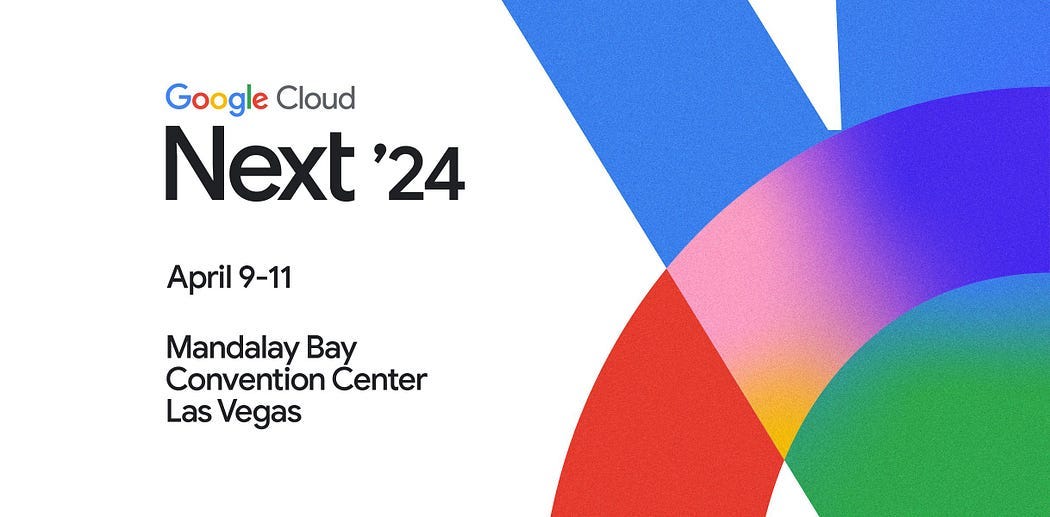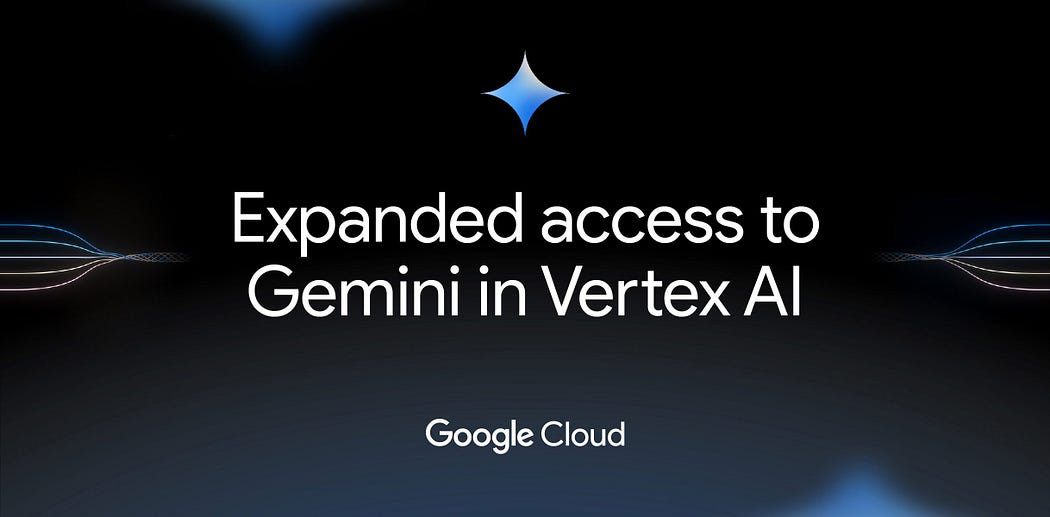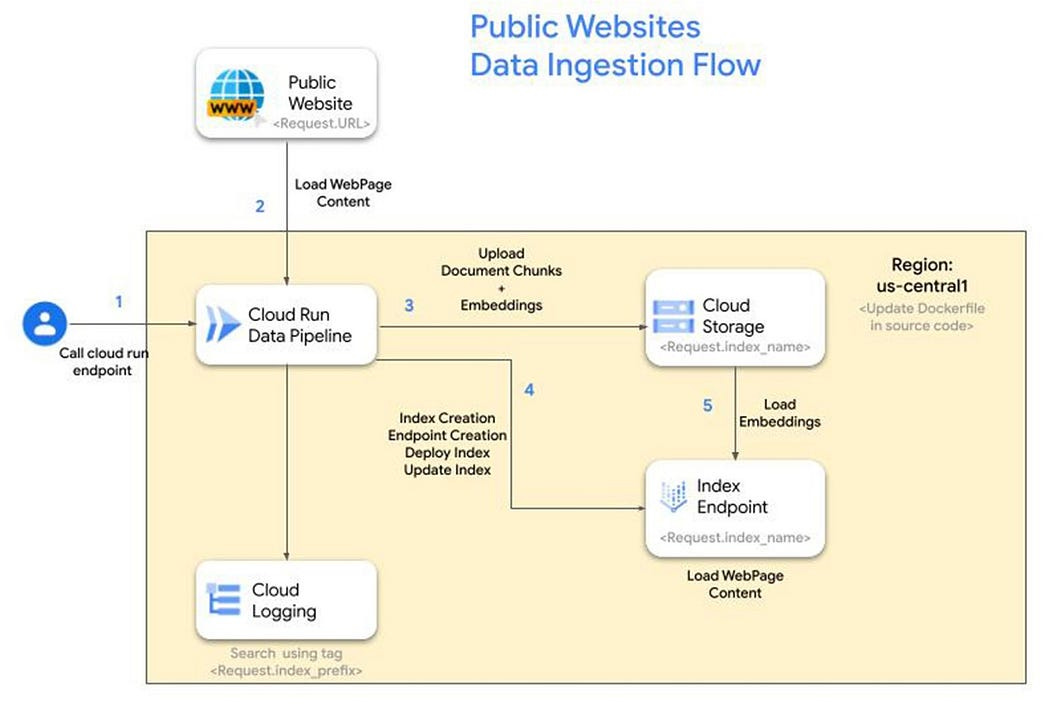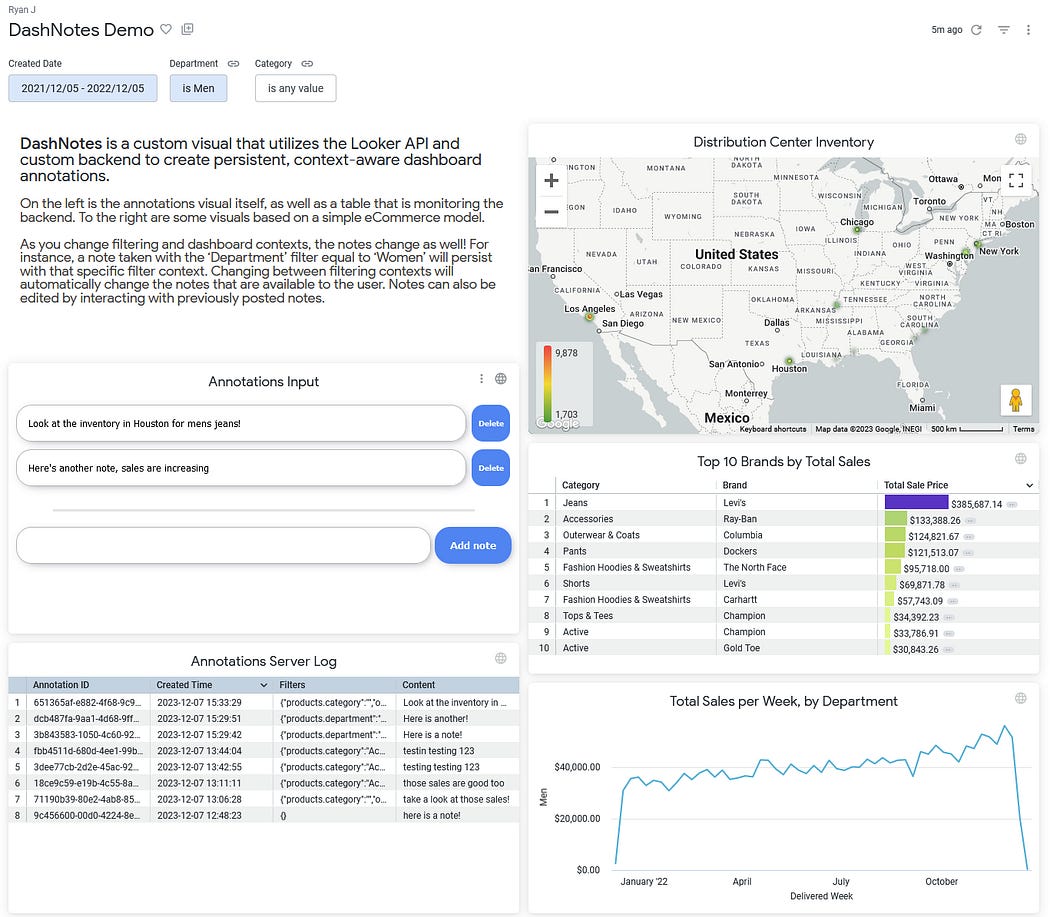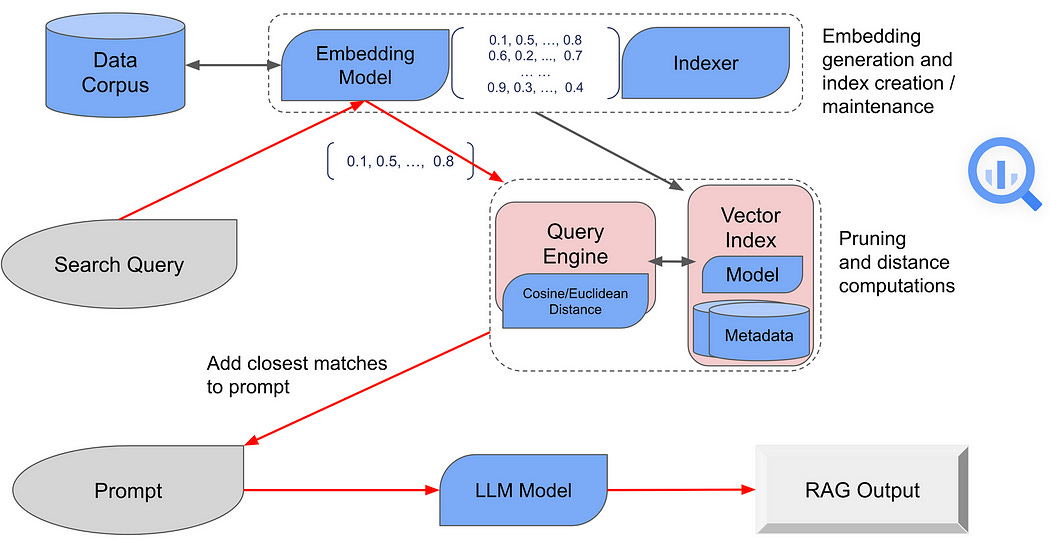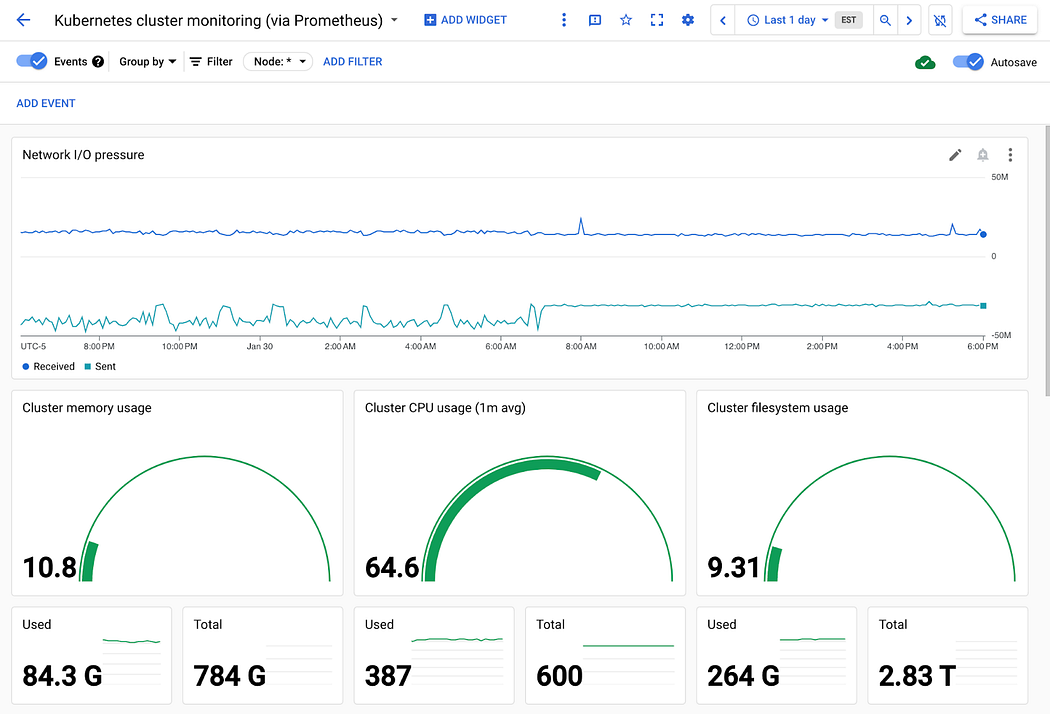Google Cloud Platform Technology Nuggets - February 1-15, 2024 Edition
Welcome to the February 1–15, 2024 edition of Google Cloud Technology Nuggets.
Google Cloud NEXT ’24 Session Catalog
The biggest Google Cloud event of the year is just under 2 months away. The full session catalog has gone live. Check out the blog post on the details for NEXT ’24, registering for it and some interesting sessions.
The Gemini Era
I guess this news deserves a separate section in this newsletter. There are some significant announcements with the Gemini model. These include:
Gemini 1.0 Pro is now available in general availability to all Vertex AI customers. For all practical purposes, 1.0 Pro offers the best balance of quality, performance, and cost for most AI tasks, like content generation, editing, summarization, and classification.
Gemini 1.0 Ultra is now available for Vertex AI for customers via allowlist
A new generation of Gemini models with Gemini 1.5 is now available. First up is Gemini 1.5 Pro, which introduces a new breakthrough experimental feature in long-context understanding aka context window length. Apps can now run up to 1 million tokens in production. This has the potential to introduce a completely new class of applications and even approaches to current solutions, which were working around the context length limitations.
Check out the blog post for more details and how customers are utilizing these models.
Infrastructure
We have a new region for Google Cloud. The Johannesburg cloud region in South Africa is ready for customer use. Check out the post along with specific investments for Africa region.
While migrating to the Cloud has its list of advantages, you may be called upon to support that via Return On Investment (ROI). Check out this sponsored IDC research study to gain a better understanding of the tangible ROI of migrating to cloud infrastructure.
Customers
This section is usually reserved for Google Cloud customers and their success stories implementing solutions on top of Google Cloud services. This time, the customer is Alphabet, the parent company of Google Cloud. The story is specific to their decision to manage its critical business operations, including Finance, Supply Chain, Logistics, Planning, and Allocations, on SAP S/4 HANA Systems on Google Cloud. This choice would clearly dictate a better integration with various Google Cloud services and multiple downstream applications/processes. Enter the ABAP SDK that made this possible and with several other similar in-house to opening it up for the public stories, the ABAP SDK is generally available for Google Cloud customers. Download the SDK for free and onboard in a few simple steps, as the blog post says.
Containers and Kubernetes
There was a lot of news in this category:
Cloud Storage FUSE has been available to mount Cloud Storage buckets as a file system. This enables applications to access the objects in a bucket using common file I/O operations (e.g., open, read, write, close) rather than using cloud-specific APIs. The GKE integration with FUSE allows you to use pre-existing Cloud Storage buckets as persistent volumes. Check out the blog post that describes this feature and how to get started.
While the above is a good solution, if you have an AI/ML model that you are looking to train on GKE, chances are that there tens of thousands of files to be picked up during training and the latency involved using FUSE could be a limiting factor. Filestore can help there. Check out a post that highlights how GKE + Filestore could slash your training times.
Resource allocation for pods and containers is challenging. How do you allocate resources when applications could have varying resource requirements, for e.g. peak load requirements. Should you allocate for peak usage, thereby resulting in underutilization? Enter a feature named Kuberentes in-place POD resize feature and a solution, Kube Startup CPU Boos, t to make that happen. Check out the blog post for more details.
If you have been reading along, you would have noticed that the theme of all the stories covered in this section is around optimization and performance. We have one more story that continues that theme: Network Function Optimizer, a feature that lets you add container networking enhancements directly from the GKE console, is now generally available for GKE Enterprise, the premium edition of Google Kubernetes Engine. Check out the post.
Identity and Security
This DORA is not about the DevOps Research and Assessment but the EU’s Digital Operational Resilience Act, which will come into act a year from now. To help prepare for compliance, financial entities can use the updated contract terms for Google Cloud and Google Workspace, which address the key contractual provisions in Article 30. Check out the post for more details.
Did you hear about the recent CPU vulnerability called Reptar? It is an architectural CPU vulnerability discovered by security researchers at Google. What goes on behind a vulnerability response? Check out this episode in the recent bulletin of CISO Perspectives, which includes in addition to this, key updates/news in the Security world.
Machine Learning
Have you been grappling with all the GenAI services to build out a conversational interface to a publicly available information dataset. You would probably have setup something in place to retrieve the information, chunk, generate embeddings, create a Vector index and more. Check out a reference solution using Google Cloud services here.
Interested in the use case of Medical Document Text Processing? The Google Cloud Healthcare Natural Language API can be utilized to extract out structured output that you could then process further. Check out the solution.
One of the key requirements that I hear from customers when it comes to Code Generation/Completion tools is for them to use their organization codebase to suggest answers. One of the approaches to doing that is to build out a solution that uses the RAG (Retrieval Augment Generation) technique. Google Cloud Vertex AI has foundational models like Codey that help with Code Generation/Completion/Chat facilities. Check out this step by step guide to augmenting Codey with your organization’s code base.
There is never enough information on RAGs. Bookmark this in-depth blog post that is the first part in the 2-part series on how you can bring Google quality to your search results in RAG.
Databases
If you are a Firestore user, you should note that having multiple Firestore databases with a single Google Cloud Project, is in general availability. Each Firestore database has its own independent isolation. Check out how you can manage Firestore databases within your project using the Google Cloud Console today.
Cloud SQL Enterprise Plus edition for MySQL and PostgreSQL, has announced support for additional Google Cloud regions. It also now supports in-place upgrades to seamlessly move instances from Cloud SQL Enterprise to Cloud SQL Enterprise Plus edition. Check out the blog post for more details.
Data Analytics
The Looker Hackathon held in December has some solid stats: More than 400 participants from 93 countries in 48 hours of participation. The result: 52 applications, tools, and data experiences. Check out the post that highlights the winners, finalists and more.
Continuing with Looker, what is LookML (Looker Modeling Language) ? It is the language that is used in Looker to create semantic data models ( dimensions, aggregates, calculations, and data relationships in your SQL database). Looker uses a model that is written in LookML to construct SQL queries against a particular database. Check out this article that gives both an overview of LookML and also why and when you would want to use that versus in-warehouse ELT tools.
Is there something that BigQuery will not provide support for? With the advent of GenAI applications, we are seeing an increasing support for related foundational services right within BigQuery. The latest one is public preview support for Vector Search right within BigQuery. All done via the CREATE VECTOR INDEX and VECTOR_SEARCH syntax. Check out the blog post for more details.
Developers and Practitioners
Facing scarcity of GPUs? Check out a new approach that utilizes Google Cloud Workstations to you use LLMs locally on CPU and memory within the Google Cloud environment. The process is enabled via localllm, a set of tools and libraries that provides easy access to quantized models from HuggingFace through a command-line utility. Check out the blog post for more details.
DevOps and SRE
The Open Source monitoring ecosystem is dominated by Prometheus. Practitioners are well versed with using tools in that ecosystem including Grafana for dashboards/monitoring. Google Cloud has taken another step towards compatibility with the ecosystem and ensuring that the Cloud Monitoring tools/services not just work closely but you can utilize your skills/knowledge with exisiting PromQL and related tools. Towards this, PromQL-based alerting policies in Cloud Monitoring are in GA and a command-line tool to import your Grafana dashboards is also available. Check out the blog post for more details.
Learn Google Cloud
Every month seems to be a good month to learn more about Google Cloud. The training team have put together a fantastic blog post on 29 no-cost ways to start your learning journey or in most cases to learn something new about Google Cloud. These journeys include short courses, hands-on codelabs and more. Check it out.
One of the clear differentiators of Google Cloud has been its global network infrastructure. The networking offerings in Google Cloud have also seen a significant jump in both numbers and capabilities over the last decade and can be difficult to navigate. How about marking Google Cloud Networking as a thing to learn and/or refresh once again? Start your journey today via a Tour of Cloud Networking.
Stay in Touch
Have questions, comments, or other feedback on this newsletter? Please send Feedback.
If any of your peers are interested in receiving this newsletter, send them the Subscribe link.
Want to keep tabs on new Google Cloud product announcements? We have a handy page that you should bookmark → What’s new with Google Cloud.




